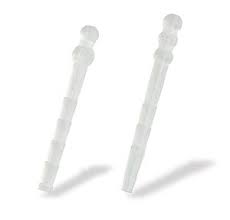A dental crown is an artificial restoration used to cover all or most of the visible part of a tooth. Sometimes referred to as a ‘cap’ the crown aims to restore the shape and size of a tooth whilst also providing durability. Crowns can be made from metal, porcelain and ceramic materials.
Crowns Are Routinely used for:
– Protecting weakened teeth after root canal treatments or large restorations
– Teeth that are broken down or fractured.
– Malformed teeth or irregular shaped teeth.
– Closing spacing between teeth.
– Teeth that are misaligned (crooked) as an alternative to orthodontics.
– Providing support for dentures or bridgework.
– The final restoration over a dental implant.
– Shortened teeth due to wear.
Porcelain Bonded to Metal Crowns
These are the most common type of crowns used. A porcelain outer layer is reinforced by a metal sublayer. The metal can be precious or non-precious. They provide a cost effective balance of strength and aesthetics.
Full Gold Crowns
Using precious gold alloys these are preferred for strength and durabilty, Usually made for posterior teeth where biting forces are increased. They require minimal tooth reduction.
Emax Crowns
We recommend Emax Crowns for the most superior aesthetics and durability. Made from ceramic lithium disilicate, the metal free option offers the most lifelike natural appearance. They are primarily used on anterior teeth but can be considered for posterior teeth aswell. As there is no metal show-through, grey lines at the gum-line will not be seen if recession occurs.
Zirconia Crowns
These are the option of choice for posterior teeth if strength is important but a metal free crown is desired. Having similar properties to Emax crowns but also increased durability.
Post Core for Crowns
Sometimes a post crown is needed. This is usually when a tooth has been root-filled and the core of the tooth needs reinforcing . Historically posts were usually made out of stainless steel, titanium or cast metal at the laboratory and then a crown placed over.
The latest techniques involve the use of fibre posts instead due to them having similar flexural properties as teeth. They reduce the risk of root fractures if trauma to the teeth was to occur. Being metal-free cosmetics are also optimised.
The Procedure
The treatment is carried out over 2 visits.
On the first visit the outer surface of the tooth is removed making space for the crown to fit onto. Once the tooth has been shaped, impressions are taken of both the tooth and the opposing jaw. From this, a detailed model is cast for the technician to prepare the crown. An appropriate shade is selected and a temporary crown fitted.
On the second visit the temporary is removed and the final crown checked for fit and appearance before cementation.
Aftercare
As with your own teeth we advise that oral hygiene be maintained. Your dentist may also advise that a biteguard is worn nocturnally (night-time) to protect the crowns from grinding habits. Crowns can last over twenty years.
Contact Form
Please fill out the short form below and a member of the team will be in touch shortly.

11 Anchor Road, Aldridge, Walsall, WS9 8PT
info@aldridgedentists.co.uk
01922 452 540
Opening Hours
- Monday: 9:00 – 5:30pm
- Tuesday: 9:00 – 5:30pm
Wednesday: 9:00 – 5:30pm
- Thursday: 9:00 – 5:30pm
- Friday: 9:00 – 5:00pm
- Saturday: Closed
- Sunday: Closed
© Copyright | All Rights Reserved | Anchor Road Dental Practice
Last Updated on 17th May 2023





